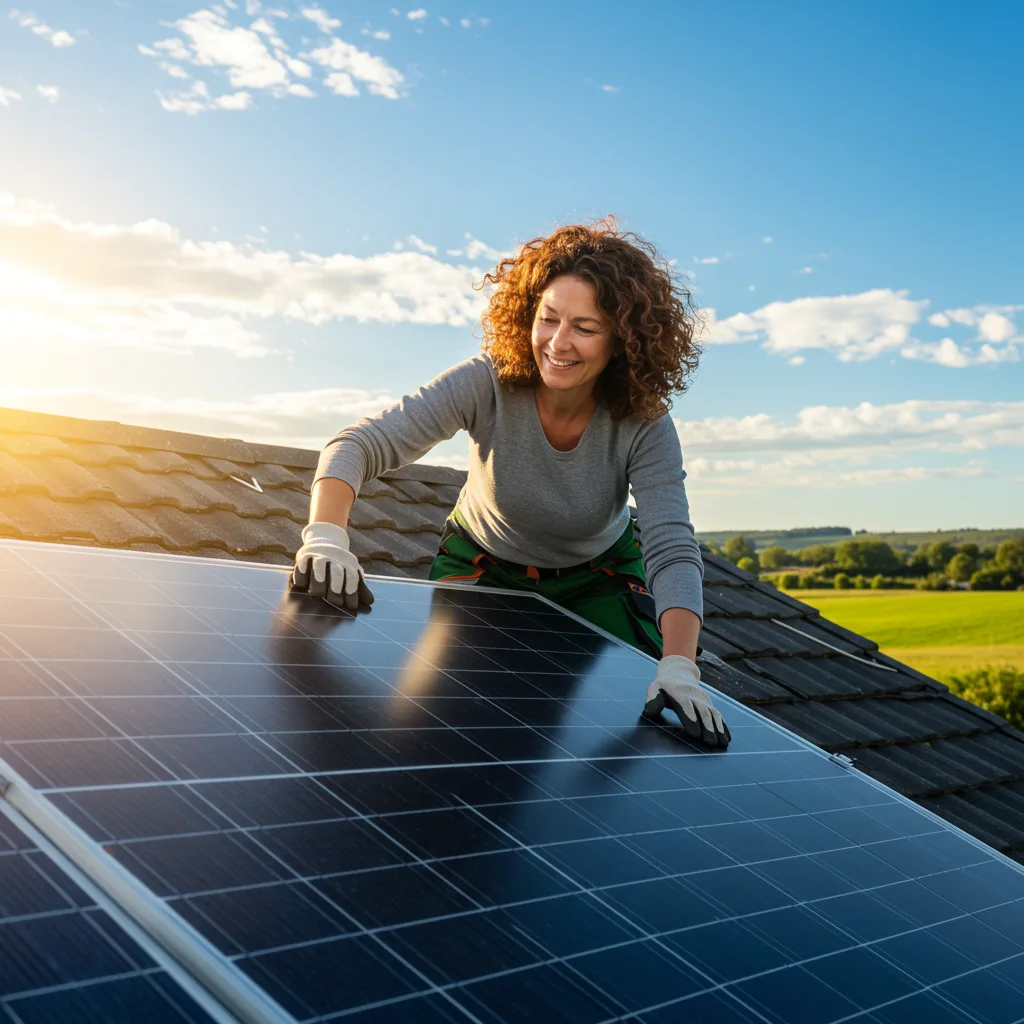DIY Solar Panel Installation: Affordable Green Energy for 2025
DIY solar panel installation offers an affordable way to harness green energy in 2025, reducing electricity bills significantly. With U.S. households spending $1,500 annually on power, per the U.S. Energy Information Administration, solar adoption rose 25% in 2024, driven by incentives like the 30% federal tax credit, according to the U.S. Department of Energy. Therefore, this guide, crafted for EcoDweller.com, provides step-by-step instructions to install solar panels at home, making sustainable living accessible.

Why DIY Solar Panel Installation Matters in 2025
Solar energy is transforming homes. Rising energy costs, up 10% in 2024, push DIY solutions, per the NERC. Moreover, self-installation saves 20–40% compared to professional setups, as noted by the National Renewable Energy Laboratory. Additionally, it empowers homeowners to reduce reliance on fossil fuels.
Benefits of DIY Solar Panel Installation
- Cost Savings: Cuts installation costs by 20–40%.
- Energy Independence: Reduces grid dependency.
- Tax Incentives: Qualifies for a 30% federal credit.
- Environmental Impact: Lowers carbon emissions.
- Skill Development: Builds hands-on expertise.
Step-by-Step Guide to DIY Solar Panel Installation
Follow these steps to set up your solar system.
1. Assess Your Energy Needs
Calculate daily usage with a meter from the Energy Saver. A typical home needs 5–10 panels, depending on consumption.
2. Choose the Right Location
Select a south-facing roof with 6+ hours of sunlight, per the Solar Power Authority. Avoid shaded areas for optimal output.
3. Purchase Solar Components
Buy panels, inverters, and mounts from Home Depot, costing $200–$500 per panel, including a $50 inverter.
4. Obtain Permits
Check local regulations via the EIA. Most areas require a $50–$100 permit for residential setups.
Tip: Consult Local Codes
Contact your city hall to ensure compliance before starting.
5. Install Mounting Hardware
Secure racks with $20 bolts, following the NREL guidelines for roof stability.
6. Mount the Panels
Attach panels using a $10 wrench, ensuring a 10–15° tilt for efficiency, per the Energy Saver.
7. Connect the Inverter
Link panels to a $50 inverter with cables, following the Solar Reviews manual for safety.
8. Wire to the Electrical System
Hire a licensed electrician ($200–$300) to connect to your breaker, per the NFPA.
9. Test the System
Use a multimeter ($15) to check voltage, ensuring output matches the Energy Saver standards.
10. Apply for Incentives
Submit forms to the IRS for the 30% tax credit after installation.
Cost and Savings Comparison of DIY Solar
| Component | Cost (DIY) | Cost (Professional) | Annual Savings |
|---|---|---|---|
| Panels (5) | $1,000 | $2,500 | $300–$600 |
| Inverter | $50 | $200 | Included |
| Mounting | $100 | $300 | Included |
| Labor | $200 | $1,000 | Included |
How to Maintain Your DIY Solar System
Regular upkeep ensures longevity. Clean panels monthly with water, per the Solar Power World. Check connections biannually with a $15 multimeter from the Home Depot. Additionally, monitor output via a $20 app from the Energy Monster.
Tip: Schedule Maintenance
Set reminders for cleaning and checks to maximize efficiency.
Case Study: A Home’s Solar Success
In 2024, a California family installed a 5-panel DIY system for $1,350, saving $400 annually after the tax credit, per their Energy Saver report. They expanded to 10 panels in 2025, cutting bills by 50%.
Challenges of DIY Solar Panel Installation
Obstacles include technical complexity, though online guides help. Moreover, permit delays can occur, requiring patience. For instance, consulting the Green Building Advisor resolves issues effectively.
Frequently Asked Questions
What tools do I need for DIY solar panel installation?
A wrench, multimeter, and cables suffice. See our sustainable living guide.
How much can I save with DIY solar?
Savings range from $300–$600 yearly. Check our cost table.
Do I need professional help?
Only for electrical wiring. Consult NFPA for safety.
Conclusion
DIY solar panel installation offers affordable green energy for 2025, slashing bills and boosting sustainability. From assessing needs to applying for incentives, these steps empower homeowners. For example, starting small maximizes returns. Visit EcoDweller.com for more, including our green home trends and eco-friendly car insurance guides. Ready to go solar? Share your plans in the comments or contact us!

